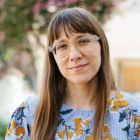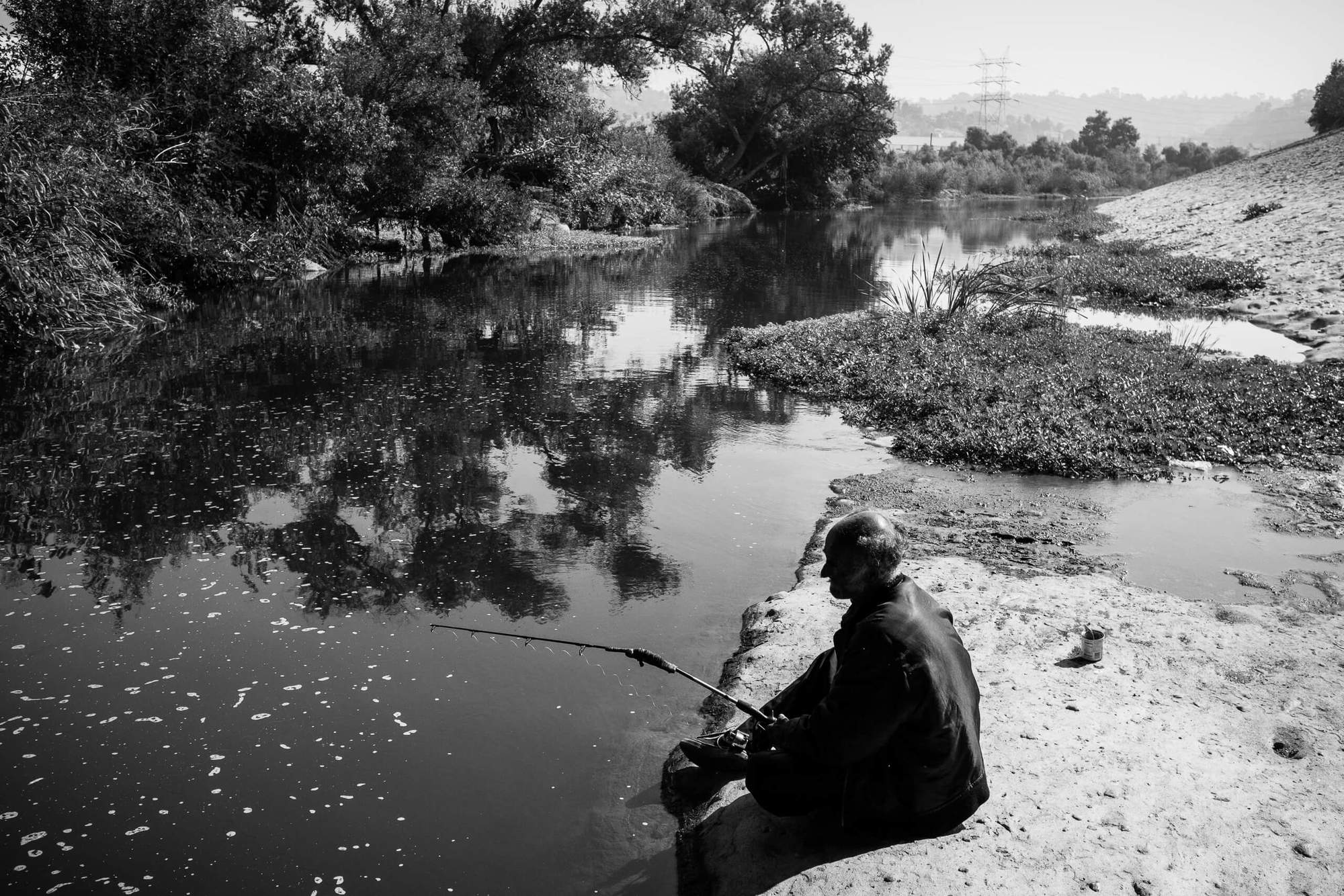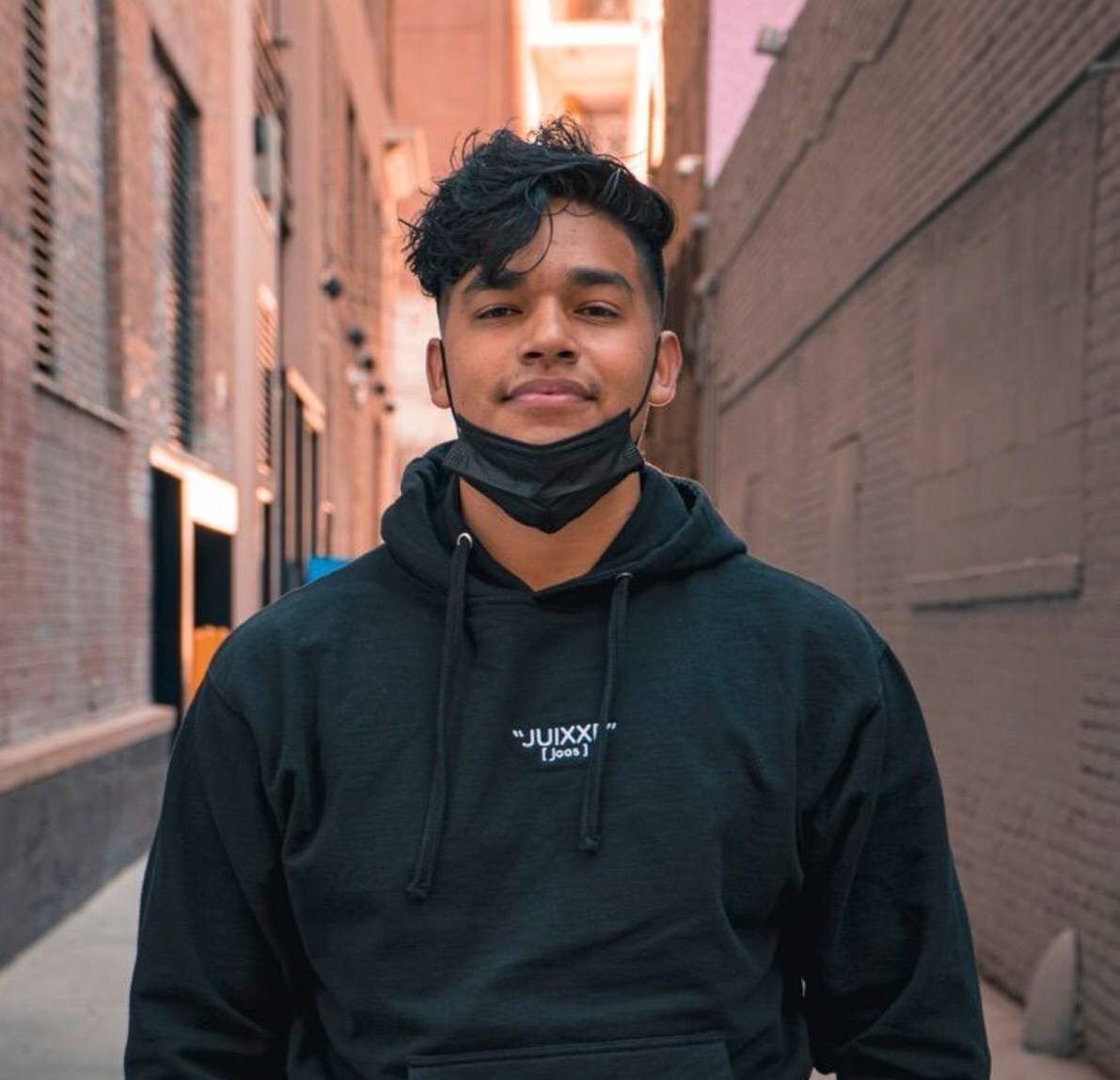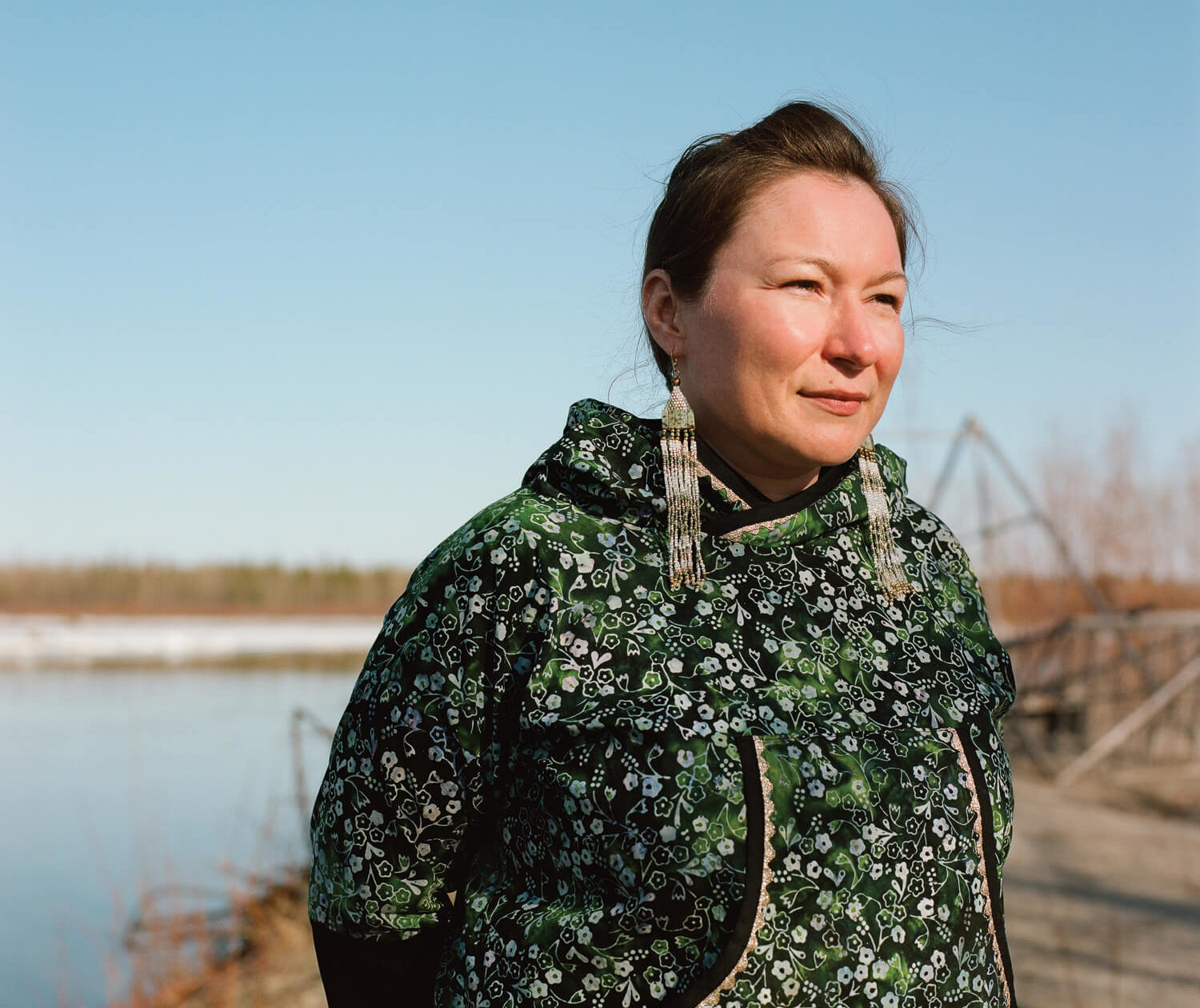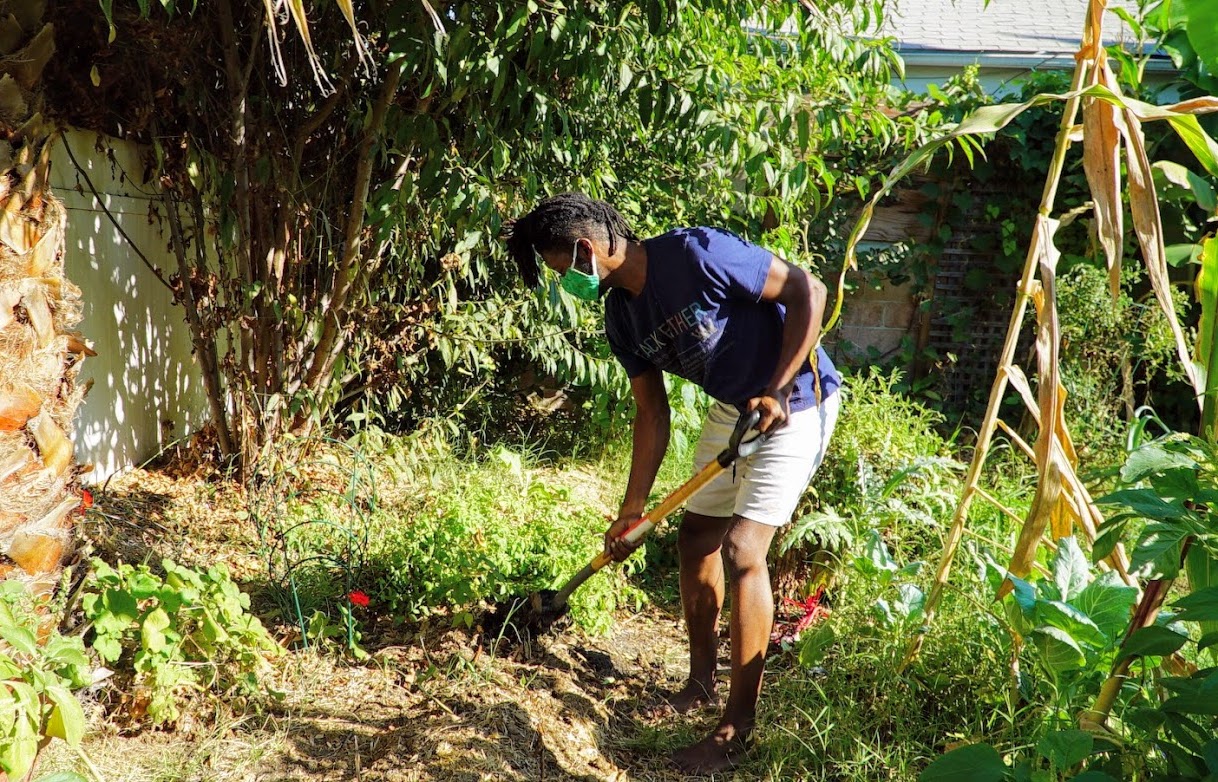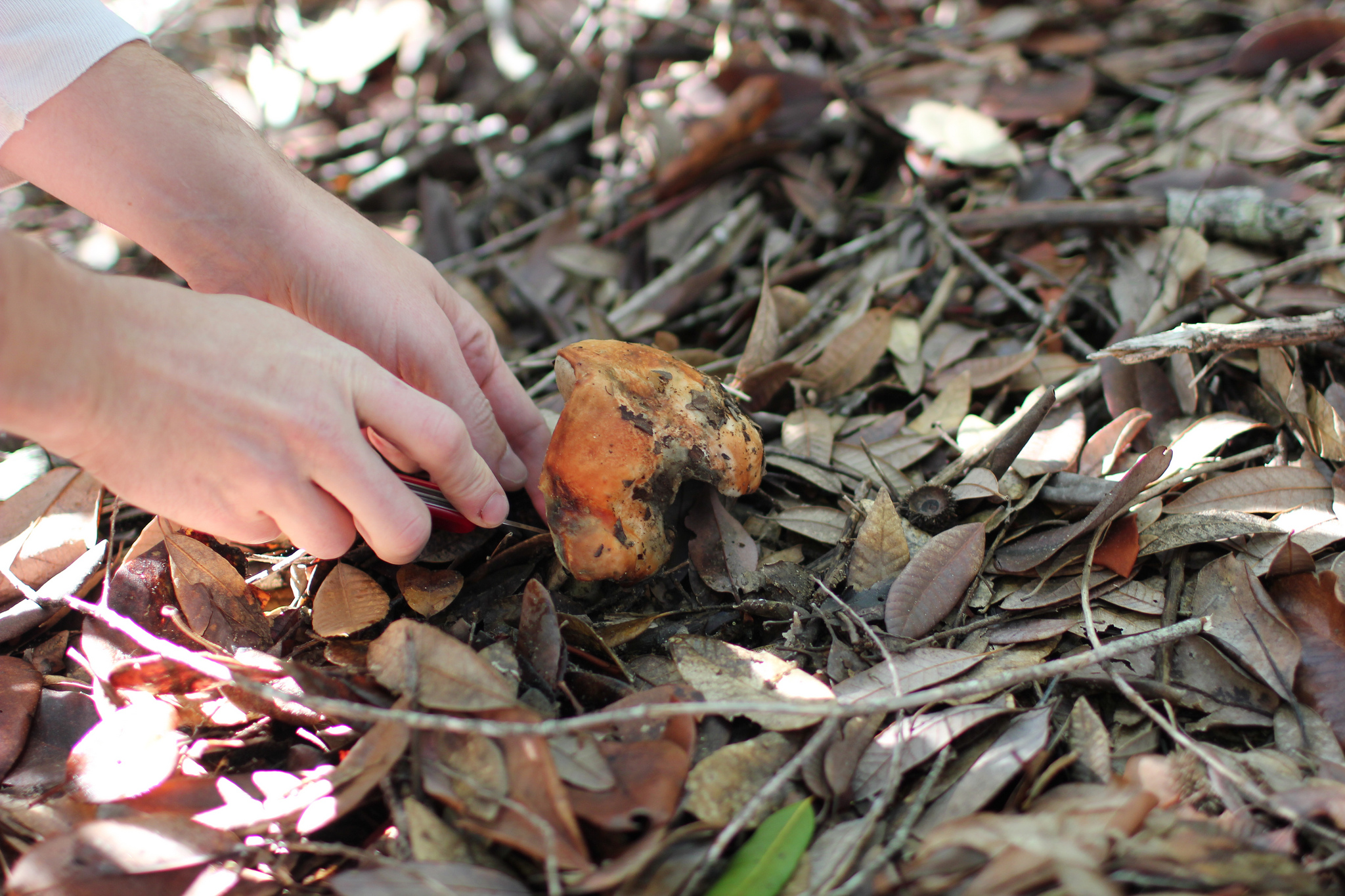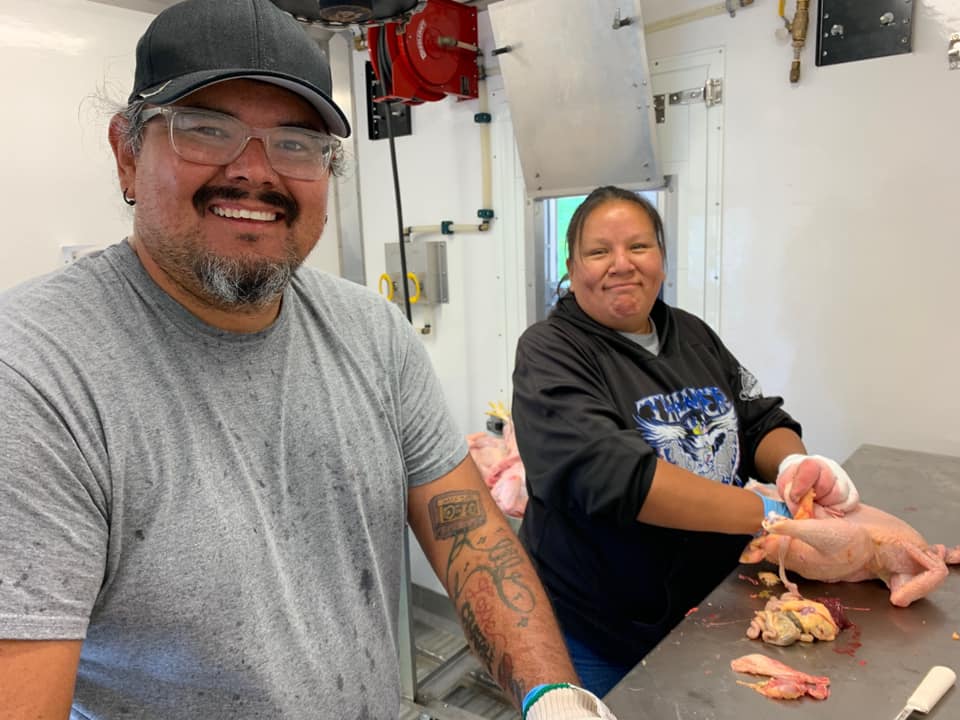Communities of color in Los Angeles are growing vegetables and adding green space to former industrial sites and landfills.
Tucked next to the 105 Freeway, just east of the Los Angeles International Airport, is the Lennox Community Garden. Once an agricultural hamlet, Lennox is now a densely built neighborhood cornered by two freeways. There is little room for green spaces. But in 2012, residents set out to change that, transforming an abandoned parcel of land owned by the California Department of Transportation into a series of raised garden beds packed with vegetables — a veritable oasis in this urban landscape.
This story was originally published at High Country News (hcn.org) on June 30, 2021.
In the San Gabriel Valley, 30 miles to the east, community members are fighting to turn a closed landfill into hundreds of acres of permanent open space. The landfill was closed 25 years ago, and its terraced grassy slopes are already home to mule deer, gray foxes and a variety of birds. And in Baldwin Hills, a state agency is hoping to purchase land that is currently dotted with operational oil pump jacks, transform it into hiking trails, fields and parks, and then put it into public use and ownership.
This reuse of industrial space, often spearheaded by communities of color that have historically lacked easy access to parks and gardens, provides an inspiring blueprint for how to reclaim and replenish the land, both for ourselves and the generations to come, Los Angeles-based photographer Stella Kalinina told High Country News. “It’s a regenerative process,” she said. “They are healing the land, healing our cities and healing people.”
Introduction by Jessica Kutz. Photos and reporting by Stella Kalinina. Drone photographs by Keri Oberly.
This story was created in collaboration with Mother Jones.
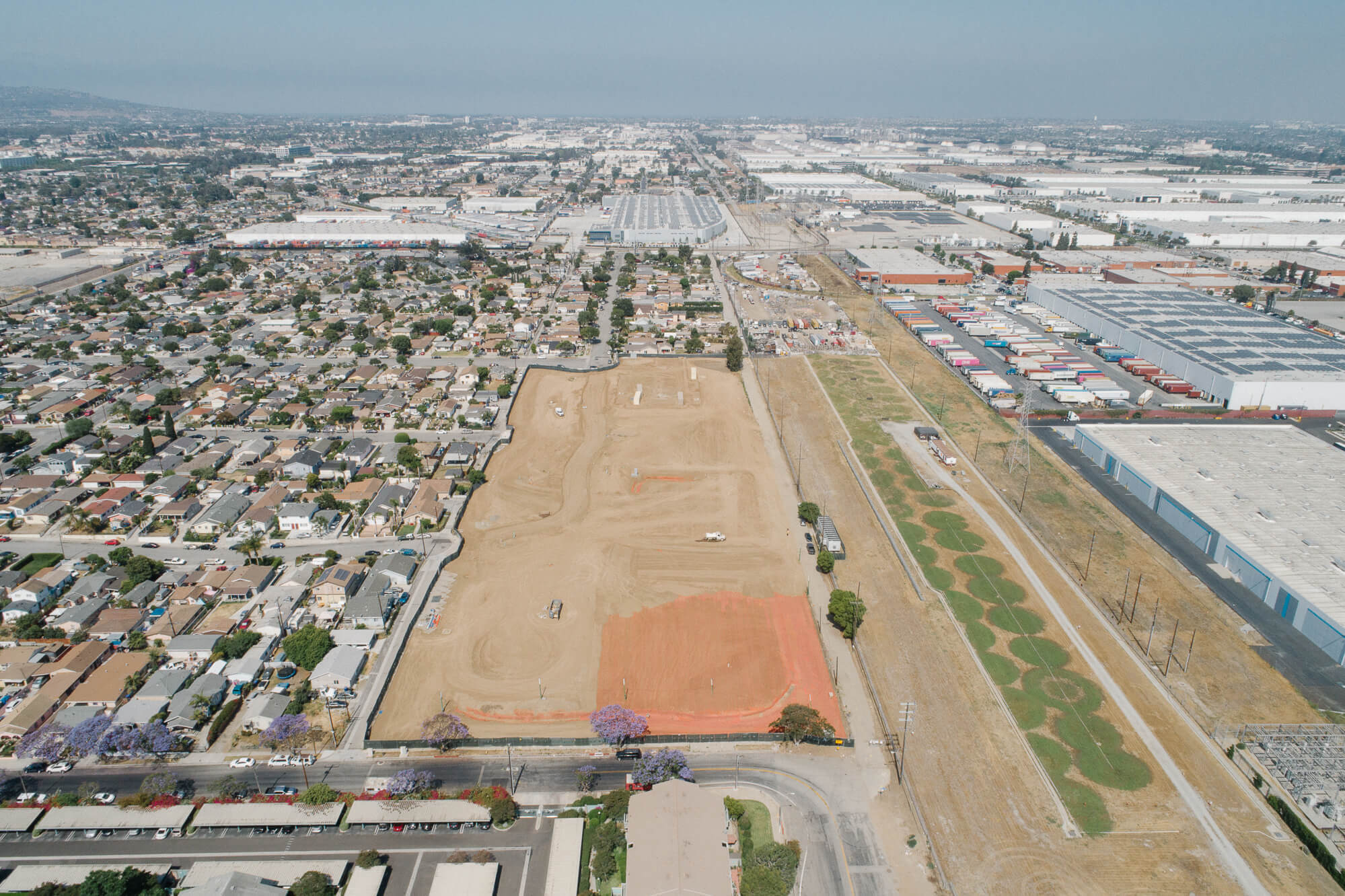
A drone photograph of Wishing Tree Park
Keri OberlyWishing Tree Park
Wishing Tree Park in West Carson has been 25 years in the making. This site was created to serve as a buffer zone between the Del Amo Superfund Site toxic-waste pits and the community. Between the 1940s and 1970s, Montrose Chemical dumped hazardous levels of DDT in a ravine on which homes were later built. The DDT was removed in the 1990s, and 67 of the houses were torn down, but some heavy metals remain. As an extra precaution, another two feet of clean soil has been added. “The park is going to be a jewel for our community, which has had nothing. So many community members died waiting for this park; kids grew up without this park,” said community activist Cynthia Babich.
Cynthia Medina, assistant director of the Del Amo Action Committee, with her daughter, Valerie Medina
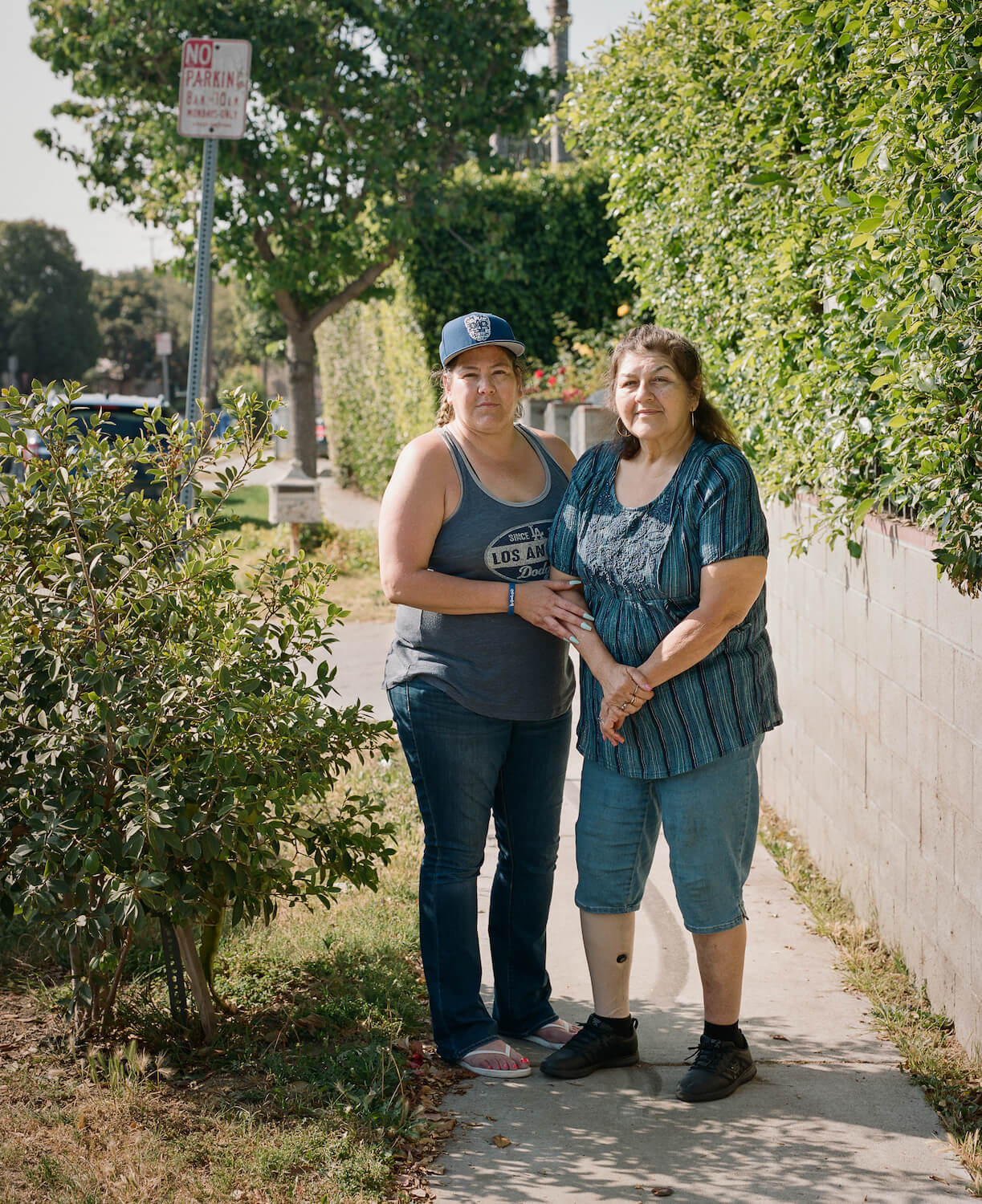
Cynthia Medina with her daughter, Valerie Medina
“Who knew when we moved in here, 40 years ago, that there was so much underground? About 10 years ago now, 23 homes on my street, in the front, all the yards were taken out because of the (DDT) contamination.
Now, we are not really planting vegetables because our dirt isn’t good dirt. We had at one time about 75 chickens, including all the little babies. But then, all of a sudden, we would lose all 12 babies. They were just dying. So then a university came and did an egg study. The agency that does our food tests said the eggs weren’t safe for consumption. And we stopped growing our vegetables, because I was afraid to feed the kids.
In my heart, I know that this (home) was not healthy for my kids. My oldest son was diagnosed at 9 years old with diabetes. Both of my daughters have a blood disorder. One of my daughters has rheumatoid arthritis, so she’s bedridden. And when my granddaughter was here, she had problems. She’s now 22 and suffers from asthma.”
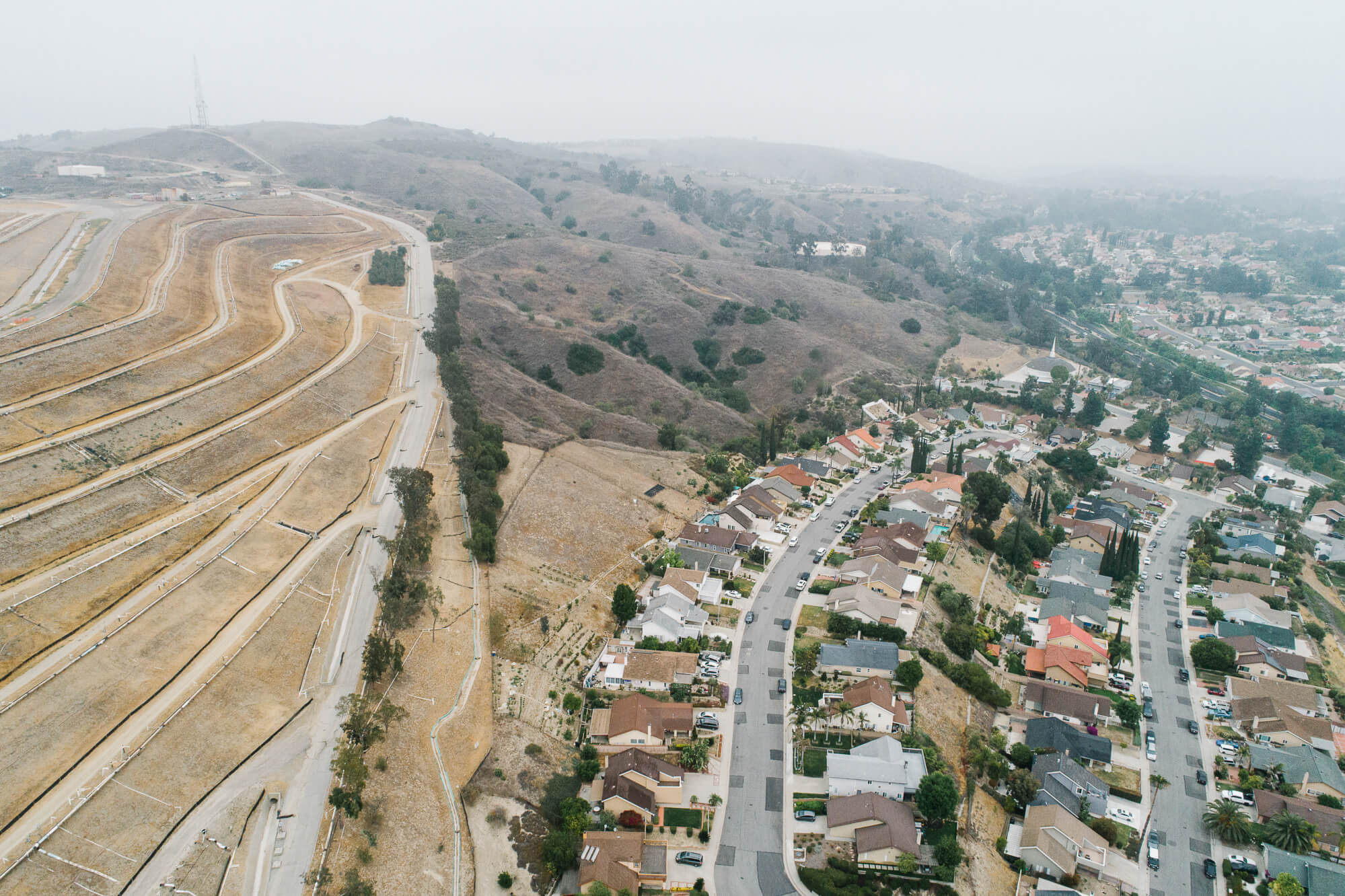
The BKK landfill holds the potential to preserve hundreds of acres of open space in the highly developed West Covina area to benefit local communities and wildlife. Class I (toxic waste) portion of BKK landfill on the left, existing habitat on city owned land and homes on the right.
Keri OberlyBKK Landfill
The BKK Landfill holds the potential to preserve hundreds of acres of open space in the highly developed West Covina area to benefit local communities and wildlife.
Brian Jobst, co-founder of Livable West Covina

Brian Jobst
“In many ways, the BKK Landfill is a huge hidden gem in the San Gabriel Valley. There, people and nature have already begun to make amends for a troubled past. The past is written. This is about the future of BKK and our community. We’re ensuring that BKK’s final chapter protects public health and becomes a thriving shared space for people, nature and even low-intensity commerce, like solar energy. We’re trying to do our best to make sure that next chapter puts health and well-being ahead of profit.
There’s 26,000 people that live within one mile of the BKK Landfill, and 176,000 that live within three miles. There’s huge population density in this area. And West Covina doesn’t have a lot of parks; we’re below the county average for park acreage per person. It would be remarkable if people could walk or bike to a park loaded with native vegetation and wildlife, and simply enjoy nature. Doing that shouldn’t mean you have to drive to the mountains.”
Lennox Community Garden
Lennox Community Garden was a vacant site left over following the construction of the 105 Freeway in the 1980s. The community garden opened in 2012.
Frank Alvarado, community gardener

Frank Alvarado
Stella Kalinina“I’ve been living here in the community of Lennox for 40 years. I remember this place when it was a bunch of houses. In the early to mid-’80s, Caltrans (the California Department of Transportation) took over, tore down the buildings and started building the 105 Freeway. Everybody who used to live here, they bought them off. People moved out.
I’ve had this garden for the last four or five years. I got it because my kids were younger back then. Now they’re like 15-16, and they don’t want to come over here anymore. I decided to just keep it and plant vegetables. It’s good entertainment after work. I come over here and just water my plants, clean up, and get my mind off all the troubles that you might have. It keeps you active, instead of being a couch potato at home. Then you get to meet people over here, too. There are not enough parks here, for sure. I guess we ran out of space around here.”
Los Angeles State Historic Park
Los Angeles State Historic Park opened in 2017 at the former site of the Southern Pacific Transportation Company’s River Station. In one of LA’s landmark environmental justice victories, a large and diverse alliance of community and civic groups fought for years to turn this contaminated former rail yard into a park instead of a massive warehouse complex.
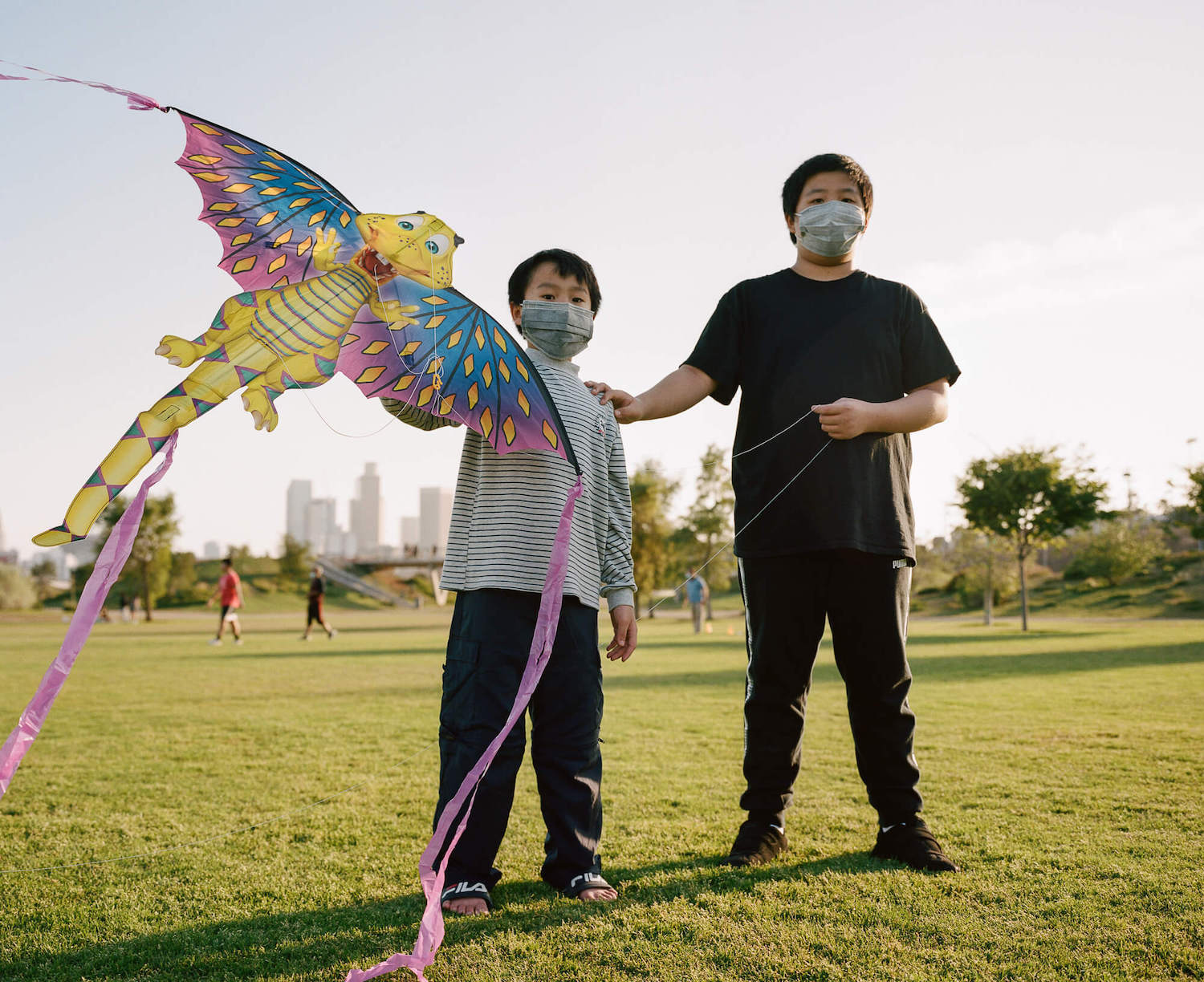
The Chen Lin brothers at Los Angeles State Historic Park in Chinatown. The former Southern Pacific rail yard opened to the public as a park in 2017.
Kenneth Hahn State Recreation Area
Kenneth Hahn State Recreation Area is the cultural center of the Baldwin Hills Parklands. It holds a special place in the hearts of the area’s Black and brown communities, having hosted countless family reunions, birthdays and quinceañeras since 1984. However, many community members fear that the area’s cultural fabric is now threatened by gentrification.
Lawrence Dotson, hike leader with Hike to Yoga
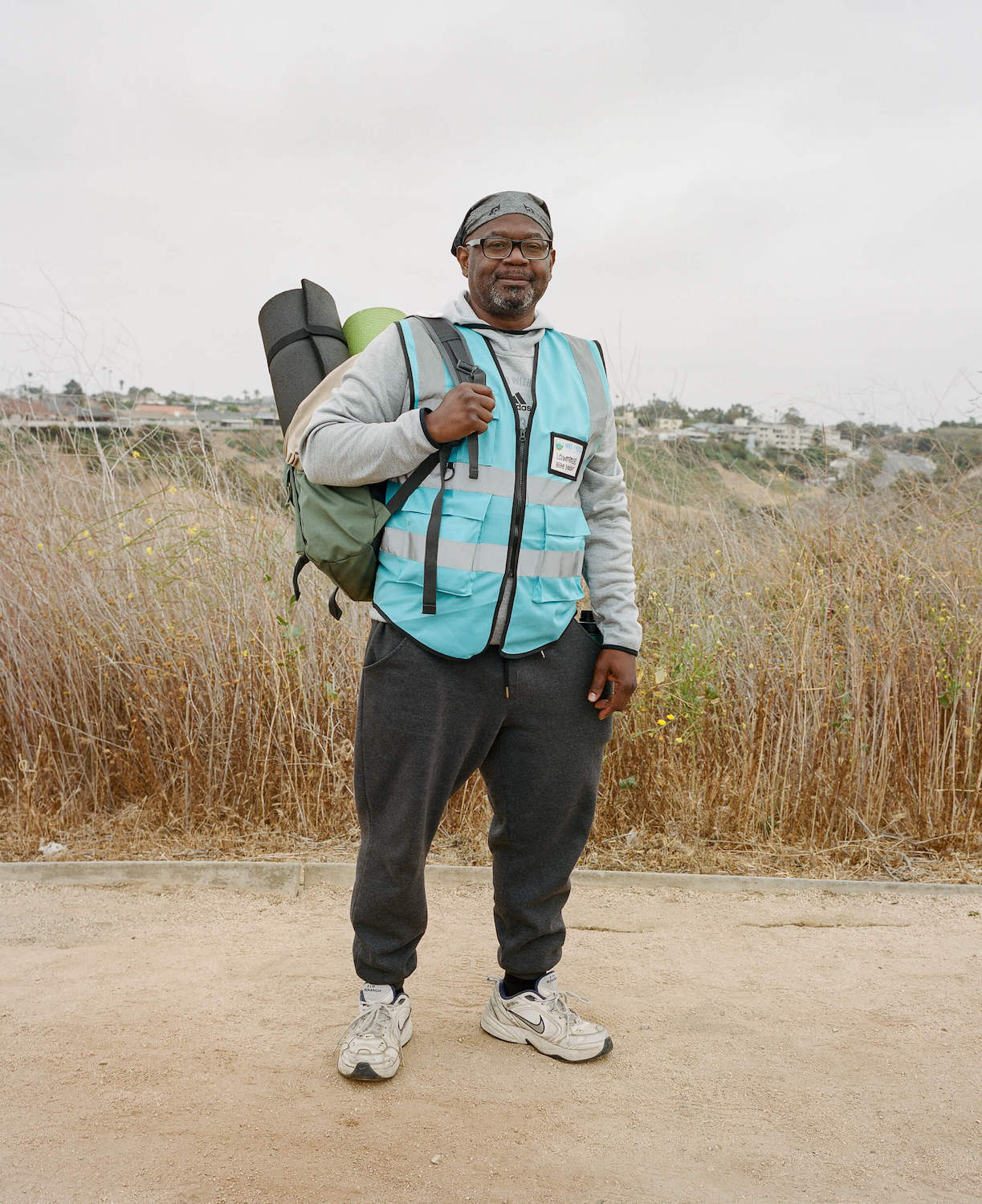
Lawrence Dotson
“When I first started coming here, it was a great place to just roll around in the grass and have fun. It was like a big playground. And then when I was in college, I needed breaks, so I would come here and let my imagination run wild. I will go up in the hills hiking. There are so many pathways, so many things to do to get lost. And then, after the riots, it became a sanctuary. It was a place just to calm down and cry, to let out the frustration, the rage, the sadness of watching my neighborhood burn down.
Having grown up here, this park was like a friend. I’d go here and just be anything I wanted to be. I’m just going to my own world and have trees around me, blue skies, green grass, a waterfall. As I got older, I said, ‘OK, my health is important. Here’s a place to go exercise. I know the trails and how to challenge myself.’ Then my son was born, so I was like, ‘Yeah, this is perfect. Let me introduce him at an early age to all the beauty and nature that’s right here around the corner.’ It’s nice to see a kid just so amazed at the simple things, like a rock.”
Irma Muñoz, founder of Mujeres de la Tierra
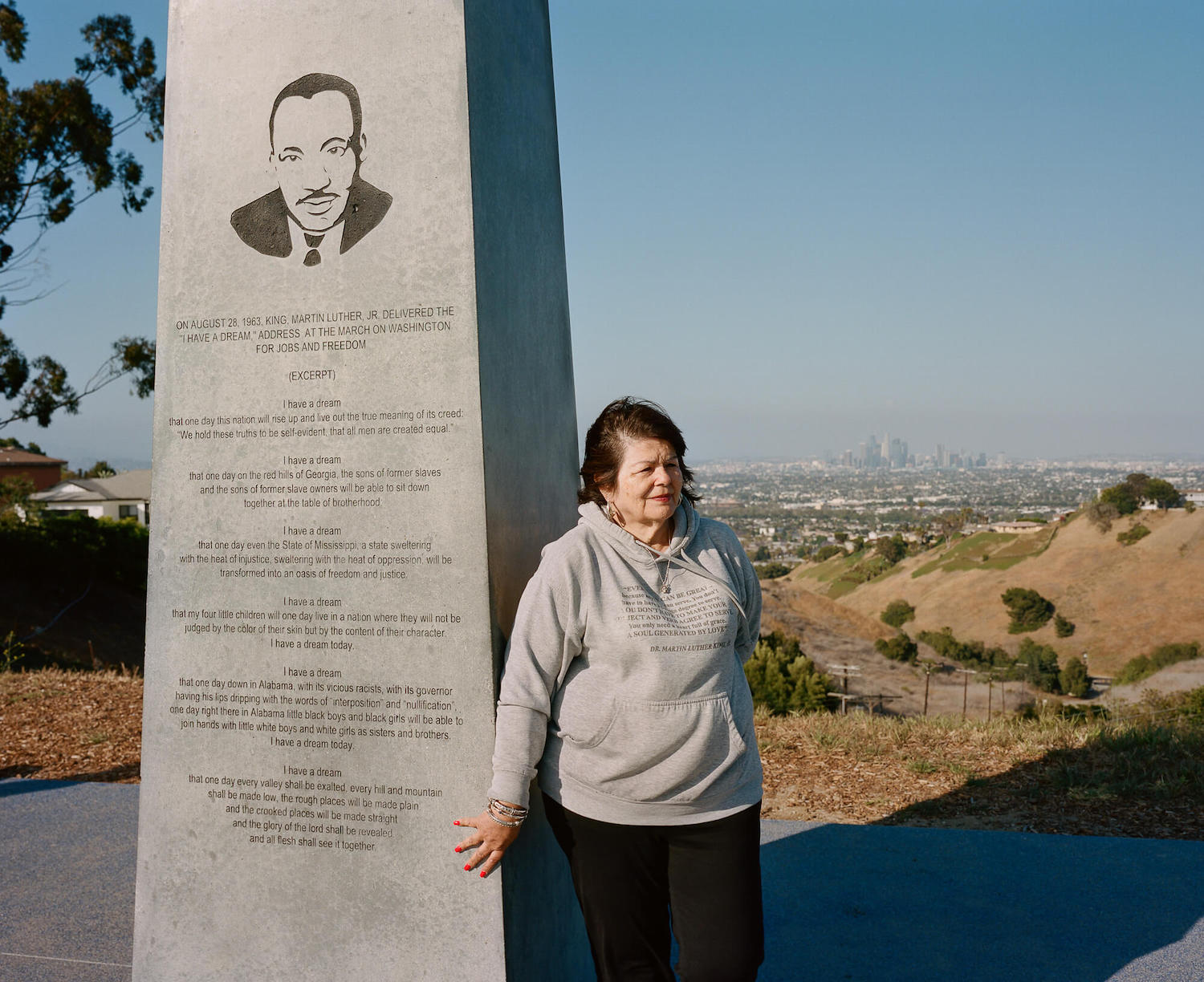
Irma Muñoz
“With the women that I have worked with through my nonprofit Mujeres de la Tierra (Women of the Earth), I have seen them come together and fight against contaminated lands. They want to understand the science. How did this get contaminated? And who contaminated it? And how long has it been contaminated? And what is it contaminated with? Is it impacting the water, the air? How is it impacting community health? Let’s find out!
The power of one is unbelievable. It takes one person to decide, ‘I want to make change,’ and then say, ‘We can do it.’ But it’s got to be a we. As Dr. (Martin Luther) King says, you do not need a master’s degree or bachelor’s degree or Ph.D. to do good. All you need to have is the heart and soul desire to make change. And I do believe that’s in everybody.”
